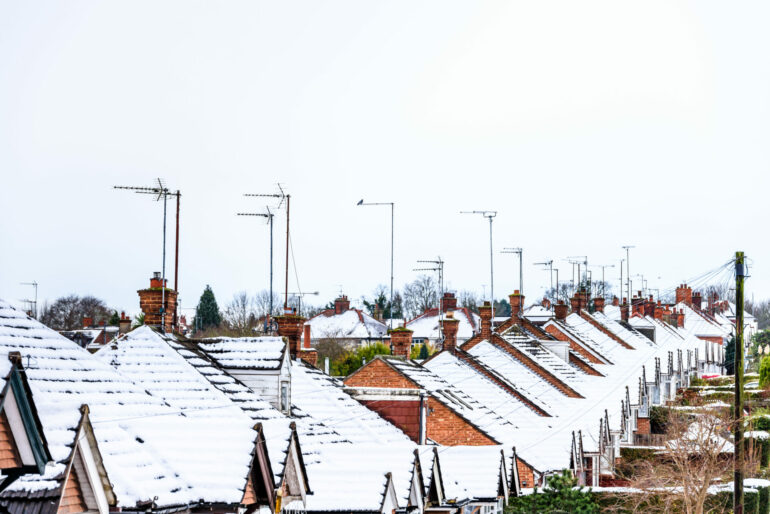A relatively soft landing may still be achievable in 2023, with activity stabilising modestly below pre-pandemic levels and house prices edging lower, perhaps by around 5%, according to Nationwide.
Between January and August, the average UK house price increased by almost £20,000, from £255,556 to £273,751, the Building Society’s House Price Review and Forecast sows.
While a 10% deposit on the typical mortgage on a first-time buyer property increased to almost 60% of annual gross earnings – an all-time high.
But according to Nationwide, house prices saw three successive monthly declines since September – the worst run since 2008.
Robert Gardner, Nationwide Building Society’s Chief Economist, said: “For the first three quarters of 2022, the housing market was remarkably resilient. For much of the year, activity levels remained at or above pre-Covid levels with annual house price growth in double digits (ranging from 10% to 14.3% in the first eight months of the year), despite intense pressure on household finances from surging inflation and a steady rise in mortgage interest rates. Between January and August, the average UK house price increased by almost £20,000, from £255,556 to £273,751.
“This performance was all the more surprising since housing affordability was already stretched in a number of important respects. In particular, deposit requirements had become increasingly onerous as a result of house prices outstripping earnings by a wide margin in recent years. A 10% deposit on the typical mortgage on a first-time buyer property increased to almost 60% of annual gross earnings – an all-time high.
FTB deposit as % of average gross income
“But the financial market turbulence which followed the mini-Budget at the end of September represented a major shock to the housing market. The number of mortgage applications slumped towards the lows seen at the start of the pandemic as a spike in long-term interest rates quickly fed through to mortgage rates and fundamentally changed the affordability dynamic for prospective buyers.
“For example, when mortgage rates moved towards 6%, the monthly mortgage payment on a typical first-time buyer property (bought with a 20% deposit) increased to the equivalent of 45% of an average worker’s take-home pay. This was similar to the levels prevailing in 2007 on the eve of the financial crisis and well up from the c30% prevailing earlier in 2022, which was close to the long run average.
“Financial market conditions have now settled with long term interest rates returning to the levels prevailing before the mini-Budget. However, mortgage rates are taking longer to normalise and activity levels in the housing market have shown few signs of recovery and house prices saw three successive monthly declines since September – the worst run since 2008.
Cumulative price increase by year
“The recent weakness may, in part, reflect an early start to the usual seasonal slowdown, with potential buyers opting to wait until the New Year to see how mortgage rates evolve before looking to transact. But it will be hard for the market to regain much momentum with economic headwinds set to strengthen, as real earnings fall further, the Bank of England moves interest rates higher and with the labour market widely projected to weaken as the economy shrinks.
“The risks are skewed to the downside, but there is still a good chance that we can achieve a relatively soft landing next year with activity stabilising modestly below pre-pandemic levels and house prices edging lower, perhaps by around 5%.
“The Bank of England is likely to raise interest rates a little further, although in recent years most borrowers have opted for fixed rate mortgages which are linked to longer term interest rates that may have already peaked. If so, this will help provide some support to affordability as will solid gains in nominal earnings growth and modestly lower house prices.
“While the labour market is expected to soften, most expect the deterioration to be modest. Many forecasters, including us, expect the unemployment rate to rise to around 5% in the years ahead – this would represent a significant rise from the current rate of 3.7%, but would still be low by historic standards.
“Moreover, household balance sheets remain in good shape with significant protection from higher borrowing costs, at least for a period, with around 85% of mortgage balances on fixed interest rates.”
Helen Morrissey, senior pensions and retirement analyst at Hargreaves Lansdown, added: “Today’s data shows the remarkable resilience of the UK housing market for much of the year with strong house price growth and activity continuing even in the face of growing economic headwinds. Many wondered how long this could continue and the end when it came, came abruptly. The aftermath of the mini-budget brought the market to a screeching halt with providers pulling deals off the table and mortgage payments heading skyward.
“It has truly shaken confidence, with would-be buyers now increasingly hesitant to come to market – a fact confirmed by recent data from the Building Societies Association (BSA) showing housing market sentiment close to all-time lows.
“As the economic gloom darkens with impending recession it’s unlikely we will see people rushing back into the market in their droves any time soon – again the BSA data showed even higher earning households increasingly worried about their bills and affordability of mortgage payments is seen as the main barrier to property purchase – even more so than saving increasingly huge deposits.
“However, there still seems to be hope for something of a soft landing as we head into the New Year. The expectation is that the recession will not result in mass redundancies and that fixed rate mortgage deal rates may have peaked. With luck this can tempt people back into the market and support activity with prices edging down modestly rather than any kind of crash. This should come as some comfort after what has been a truly terrible year for many.”



